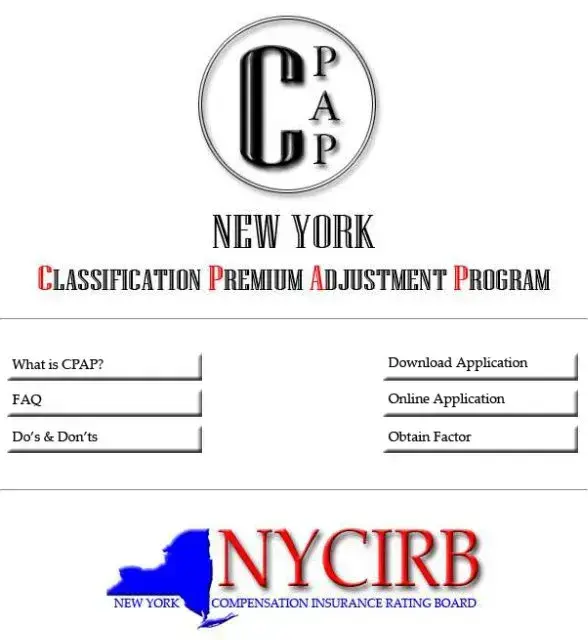NEW YORK COMPENSATION INSURANCE RATING BOARD
CPAP --- FAQ
Q.What payroll is to be reported on an application?
A.The program uses the third quarter (July, August & September) payrolls as outlined in the application instructions. Do not use yearly totals.
Q.What maximum weekly payroll ( as def ined by t he Payroll Limitation Law) is us ed on an application?
A.The maximum payroll, as outlined in the appl ication instructions for the third quarter payrolls submitted, is used.
Q.Can the weekly payroll maximums be different on an application and a policy?
A.Yes. The application uses the weekly maximum applicable to the third quarter payrolls submitted while the policy to which the credit applies uses whatever maximum is in effect for the policy period.
Q.Do overtime hours and payrolls need to be reported?
A.Yes. Overtime hours and wages are to be included subject to overtime and payroll limitation rules (i.e. the weekly payroll maximum needs to be reported along w ith the total hours worked including all overtime hours).
Q.Are Wrap-Up jobs to be reported on an application?
A.Yes. An employer's credit is based on payrolls from all policies issued for an insured.
Q.Are the credits indicated in the manual the final credits determined after the calculation?
A.No. T he calculation of a credit is a two-step process. The first part, using the manual credits, determines the Base Credit. T he second part t akes an employer's experience modification loss data ( from the prior year’s experience modification) i nto account t o determine the Net (final) Credit.
Q.Do payrolls for Non-Eligible classification codes need to be reported?
A.Yes. Since any calculated credit applies to the entire policy premium, all payrolls must be included on the application.
Q.Do hours worked need to be reported for non-eligible classification codes?
A.Yes. At least one (1) hour needs to be entered or the calculation will not process.
Q.Does an employer need to be experience rated for the policy period to which any calculated credit applies?
A.Yes. Although an insured may have previously been experience rated, they cannot apply for or receive a credit if they are not experience rated for the policy period to which any credit applies.
Q.When is an application considered too late to process?
A.Applications must be received prior to the expiration date of the policy to which any credit applies. This pertains to all policies including short term policies.








